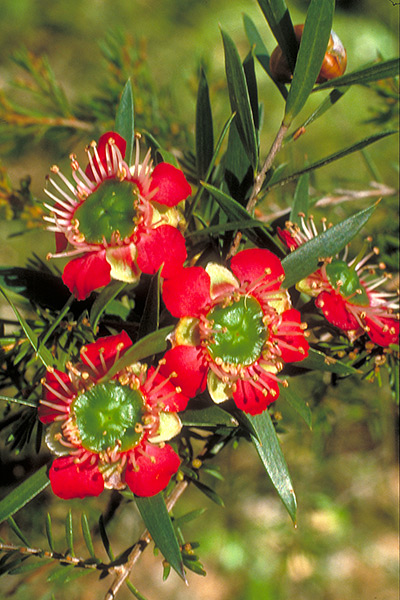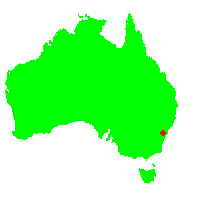General Description:
Leptospermum is a genus of about 83 species, all but three occurring in Australia. They are commonly known as ‘tea trees’ due to the practice of early European settlers of using the leaves of some species as a tea substitute.
Leptospermum spectabile is a relatively recently named species (1989) and it is sometimes still known under the name Leptospermum sp “Colo”. It is usually a medium shrub to about 2.5 metres with dark green, narrow, lance-shaped leaves to about 30 mm long. The 5-petalled, deep red flowers are larger than is typical for the genus being about 20 mm diameter with numerous small stamens surrounding the central stigma. The flowers which appear in spring have a green centre and are followed by woody fruits containing many seeds; the fruits remain unopened until they are removed from the plant or the plant dies.
L.spectabile is becoming well known in cultivation and it is proving to be a hardy shrub for moist soils in temperate climates. Plants prefer full sun or partial shade and may be pruned severely if necessary. The species is being used in hybridisation work and is one of the parents of several cultivars including ‘Aphrodite’, ‘Merinda’ and ‘Rhiannon’.
Propagation is easy from seed which does not require any pretreatment. Cuttings are also successful and this is the only method that should be used for propagation of cultivars.
* EPBC Act = Environment Protection and Biodiversity Conservation Act 1999;
ROTAP = Rare or Threatened Australian Plants (Briggs and Leigh, 1988)
For further information refer the Australian Plants at Risk page

Leptospermum spectabile
Photo: Brian Walters
 Australian Native Plants Society (Australia)
Australian Native Plants Society (Australia)